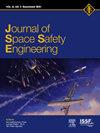空间运载火箭统计可靠性估计:2000-2022
IF 1.7
Q3 ENGINEERING, AEROSPACE
引用次数: 0
摘要
本研究通过趋势分析和各种统计方法,检验了执行商业、民用和军用空间发射任务的空间运载火箭(slv)的可靠性。通过检查数据子集,包括发射日期、部门(商业、民用或军用)、发射国家、预定任务轨道、SLV系列和失败的子系统,分析从Seradata数据库获得的数据集的趋势。对2000年1月1日至2022年12月31日期间发生的1873次发射的SLV可靠性和性能趋势进行了演化的、随时间变化的一级贝叶斯成功率分析。据确定,即使在本世纪20年代发射事件几乎呈指数增长的情况下,每年的失败次数也不到6%,平均成功率为每年95%。总的来说,56%的发射被送入近地轨道(LEO), 32%被送入地球同步轨道(GEO)或静止轨道(GSO)。尽管为这些轨道提供服务的slv的成功率在92%以上,但近地轨道发射约占总发射失败的73%,而GEO-GSO发射占失败的18%。具体来看美国和俄罗斯的SLV系列,导致失败的主要子系统是推进系统,在报告的47次发射失败中,推进系统占72.3%。对37个运载火箭家族进行了一级和二级(使用矩量法)贝叶斯技术,发现发射次数高的运载火箭比发射次数少的运载火箭具有更高的可靠性,导致一级成功率大于90%。本文章由计算机程序翻译,如有差异,请以英文原文为准。
Statistical reliability estimation of space launch vehicles: 2000–2022
This research examines the reliability of space launch vehicles (SLVs) performing commercial, civil, and military space lift missions through trend analysis and a variety of statistical methods. Data sets obtained from the Seradata database are analyzed for trends by examining data subsets including launch date, sector (commercial, civil or military), launch country, intended mission orbit, SLV family, and failed subsystem. Evolving, time-dependent first-level Bayesian success rate analysis is performed to assess SLV reliability and performance trends on 1873 launches occurring during the period 1 January 2000 to 31 December 2022. It was determined that even with a near-exponential increase in launch events in the 2020s, the number of failures is less than 6% each year, with the average success rate being 95% annually. Overall, 56% of launches were sent into low Earth orbit (LEO) and 32% were sent into geosynchronous Earth orbit (GEO) or geostationary Earth orbit (GSO). Although SLVs servicing missions to these orbital regimes featured success rates above 92%, LEO launches accounted for approximately 73% of total launch failures, while GEO-GSO launches accounted for 18% of failures. Specifically looking at U.S. and Russian SLV families, the main subsystem responsible for failure was propulsion, which accounted for 72.3% of 47 reported launch failures. First-level and second-level (using method of moments) Bayesian techniques were performed on 37 launch vehicle families and it was found that vehicles with a high accrual of launches performed with a higher reliability than vehicles with a low number of launches, resulting in first-level success rates of greater than 90%.
求助全文
通过发布文献求助,成功后即可免费获取论文全文。
去求助
来源期刊

Journal of Space Safety Engineering
Engineering-Safety, Risk, Reliability and Quality
CiteScore
2.50
自引率
0.00%
发文量
80
 求助内容:
求助内容: 应助结果提醒方式:
应助结果提醒方式:


